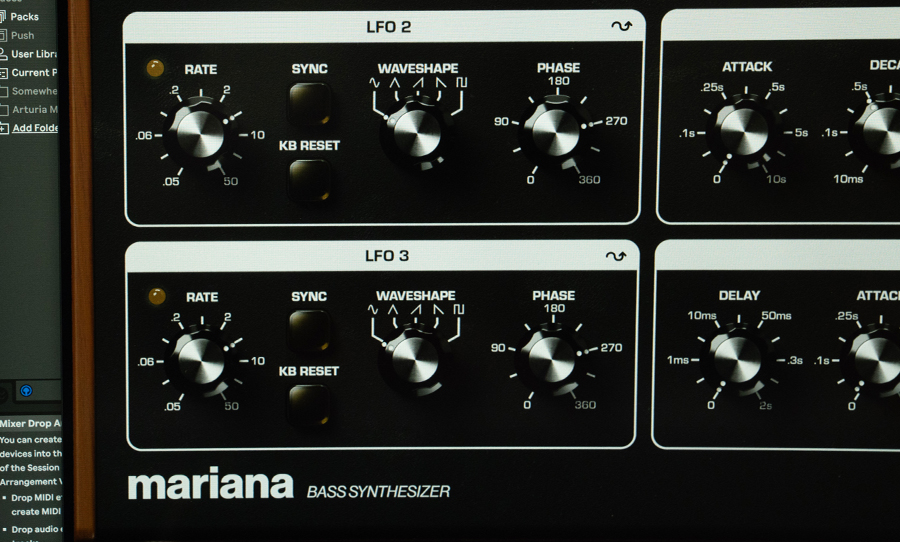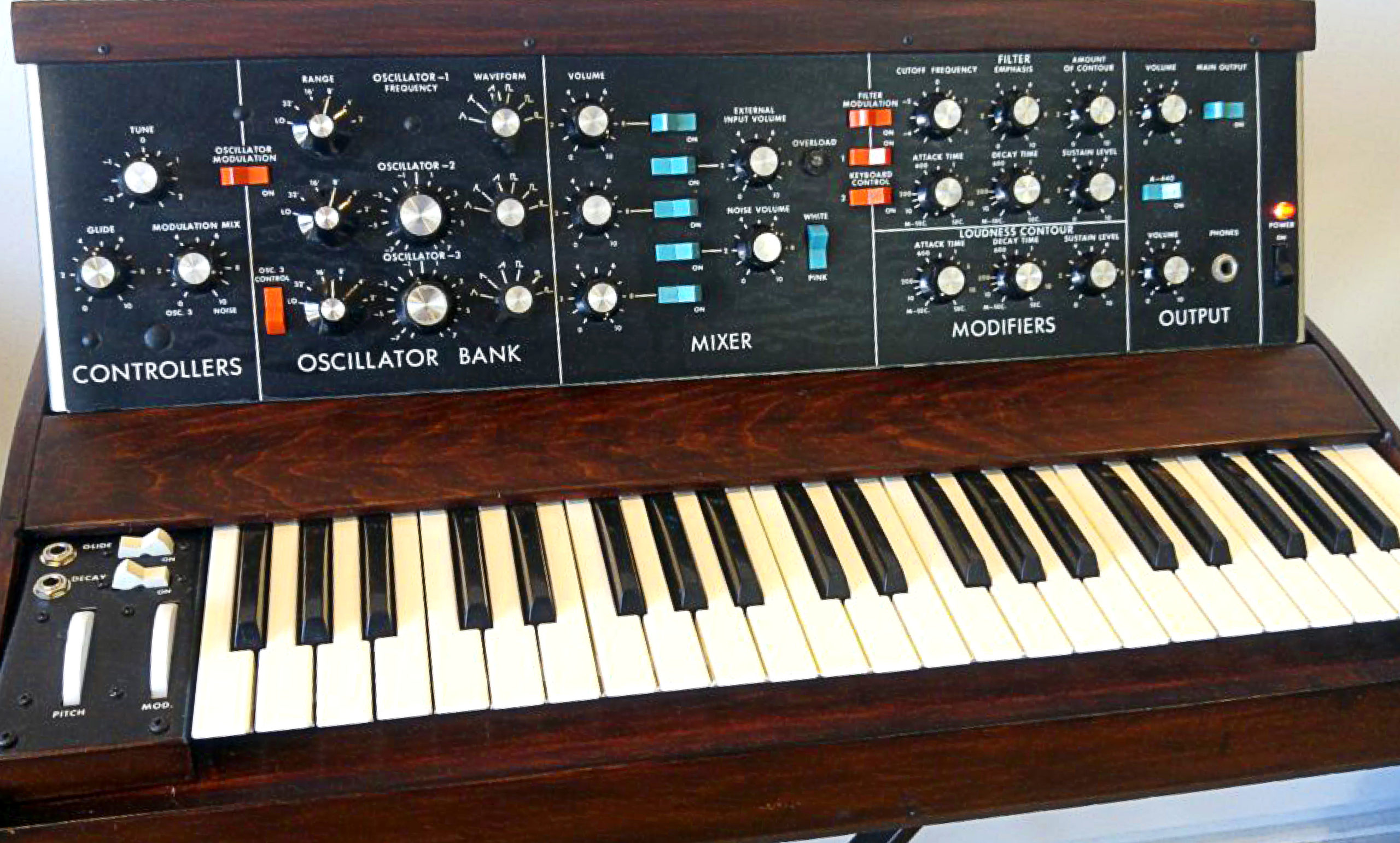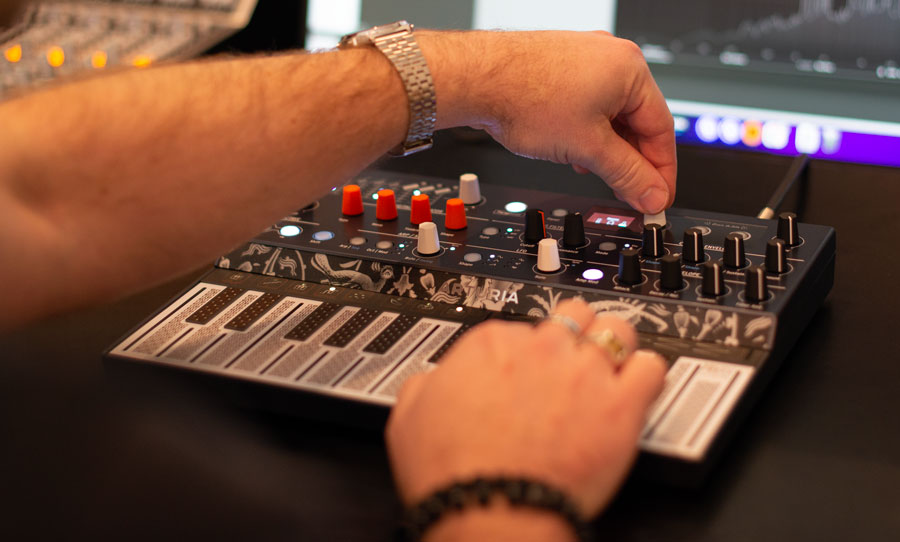In the early 1970s, the synthesizer market was dominated by two names – Robert Moog, and Alan R. Pearlman. Both men lent their names to the companies they fronted, and Moog Music and ARP Instruments were in constant competition with each other. The original Moog synthesizer, while an iconic instrument in its own right, was too bulky to make an impact on the general market. The Minimoog looked to change that, by focusing on affordability, portability, and simplicity.
The ARP Instruments response to the Minimoog came in several stages. The ARP 2500, also an impressive instrument, still had issues with size and practicality. The first attempt at a downscale was the ARP 2600, a direct successor to the 2500, and one of the most iconic analog synthesizers ever produced. While the 2600 was ARP Instruments’ most compact synthesizer yet, the Minimoog still had it beat. The final response from ARP Instruments proved to be their best move yet, and in 1971, they released the best-selling synthesizer model in the company’s history – the ARP Odyssey.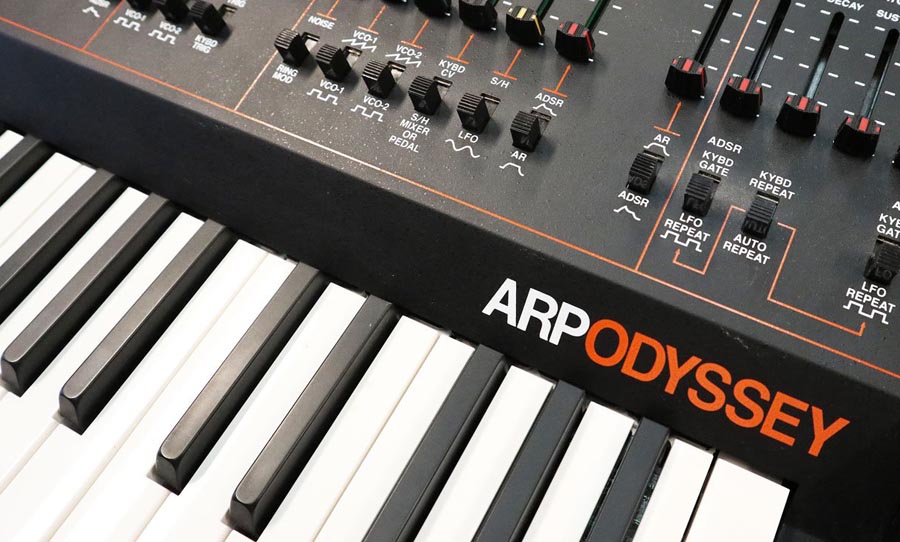
The ARP Odyssey took on the Minimoog in the 1970s and carved out a legacy of its own. Take a look at what made this synthesizer so special.
The history of ARP Instruments
The ARP 2500 was a semi-modular beast. This setup, which involved a fixed selection of components wired internally, was, at least in theory, more user-friendly than other synthesizers which relied solely on the use of patch cables. However, the intimidating volume of options available on the 2500 meant it was never able to achieve widespread commercial success, selling only about 100 units.
The ARP 2600 was the company’s first response to these issues. Focusing mainly on the most popular components of the 2500, the 2600 was able to streamline the synthesis process and provided an approachable, user-friendly experience.
Many of the ARP Odyssey’s key design feature flow directly through this lineage. While Moog Music instruments had always used control knobs, ARP Instruments, wishing to distinguish themselves from Moog, instead used vertical sliders.
To that end, the ARP Odyssey was a simplified hard-wired ARP 2600. While the Odyssey branding might suggest a break in tradition, the Odyssey Mark I carried the model number 2800, showing the company hadn’t quite left behind the old ways.
The Odyssey Mark I, produced between 1972 and 1975, was followed by the Mark II, produced between 1975 and 1978, consisting of models 2810 to 2815. The most common series of all was the Mark III, produced between 1978 and 1981, and consisting of models 2820 and 2823.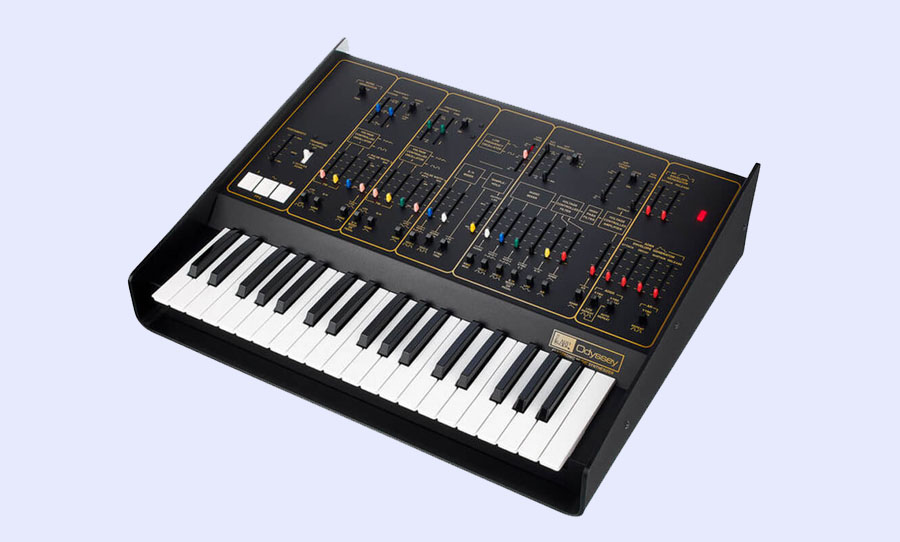
A new approach
Each model of the ARP Odyssey relied on the same basic circuitry, with some cosmetic differences and a variety of voltage-controlled filters as the instrument developed. At the core, though, the Odyssey had two oscillators to the Minimoog’s three and was one of the first duophonic synthesizers.
The Odyssey was further equipped with low and high pass filters, ADSR envelopes, sine or square wave LFO, a sample-and-hold function, oscillator-sync capability, and pulse-width modulation. In short, the Odyssey was everything you could hope for in an analog synthesizer.
In what was perhaps a mistake, ARP sought to distinguish themselves from Moog by steering clear of many of Moog’s design choices. As noted above, this resulted in sliders over knobs, which made a negligible difference in user experience, but the avoidance of Moog’s innovative pitch wheel was a more questionable decision.
Robert Moog had infamously chosen not to patent his pitch wheel, which is now standard on nearly every portable synthesizer. This left the feature open for use, but ARP opted, ironically, for a rotary knob to bend the pitch. Unlike Moog’s wheel, the ARP pitch knob wasn’t spring-loaded, so it required much more attention than was necessary to get back to normal. Recognising this issue, ARP released Mark III of the Odyssey with a PPC – Proportional Pitch Control.
The PPC consisted of three rubber pads – pitch down, vibrato, and pitch up, from left to right. The three buttons were pressure gradient, meaning if the button was pressed at the front, the pitch change was as little as a semitone, and if the button was pressed at the back, the pitch change was as much as a fifth. ARP, recognising the issues with the pitch knob, also provided kits to retrofit previous Odyssey models with the PPC.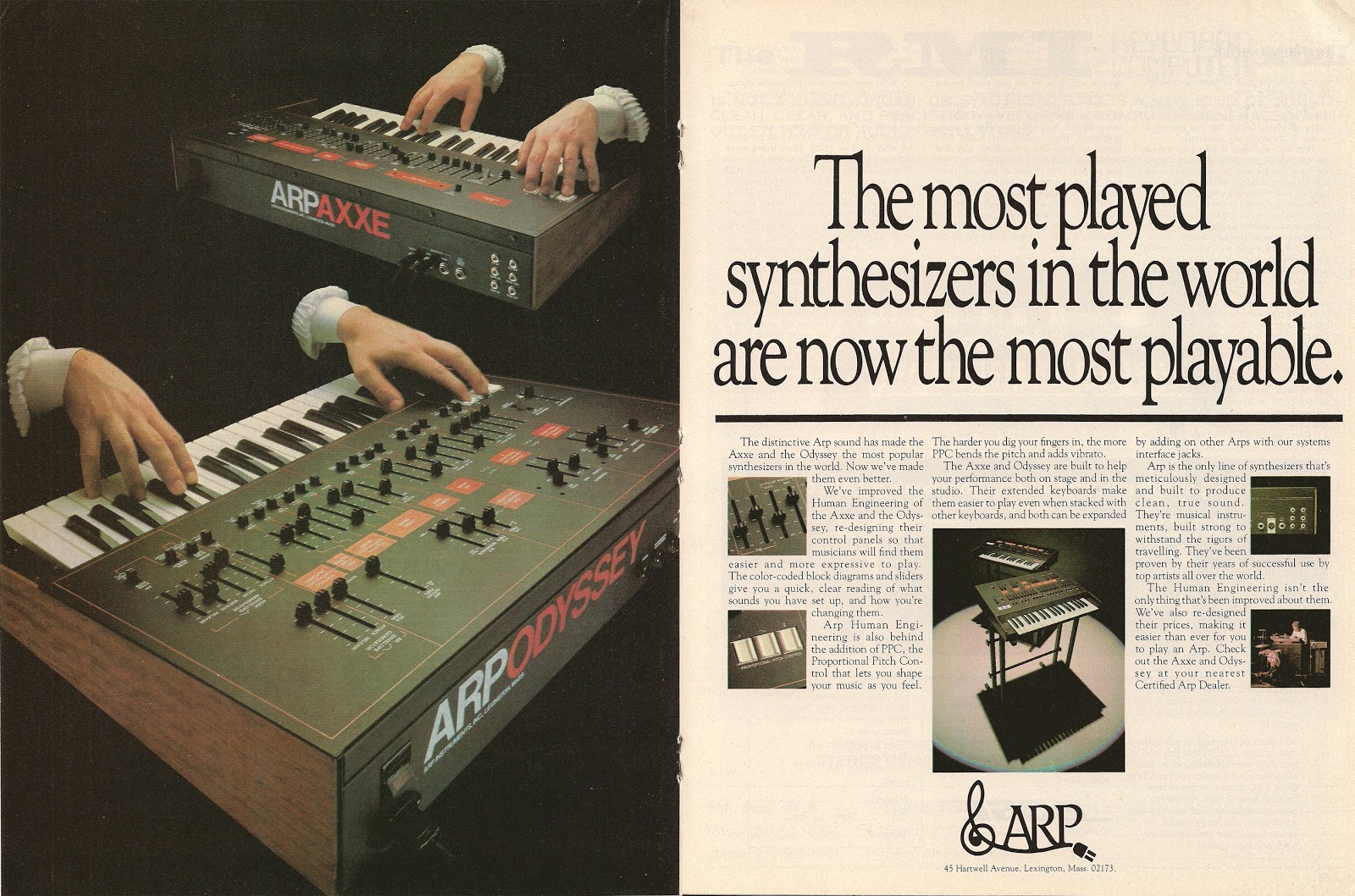
A funk breakthrough
The ARP Odyssey quickly became a staple of the music industry, providing a sharper counterpart to the warm tones of the Minimoog. The Odyssey was heard on records by musicians and groups as diverse as Kraftwerk, ABBA, Electric Light Orchestra, and Herbie Hancock.
Hancock’s monumental Head Hunters, released 1973, is one of the defining moments in jazz history. Channelling elements of both jazz and funk, the album spent 42 weeks on the Billboard chart, becoming the first platinum-selling jazz album. From the instant the needle hits the vinyl, Hancock signalled a new era, blasting out the riff that changed everything on none other than an ARP Odyssey.
Hancock took special responsibility for the album. Having previously shared synthesizer duty with Patrick Gleeson, Hancock handled all the parts. He also opted against using guitar at all, instead comping rhythmically himself on the clavinet. In the middle of all this was the ARP Odyssey, capable of both piercing leads and blown out basslines.
One of the nastiest moments on the record comes from a complete mistake, as Hancock falls victim to that questionable pitch knob. Soloing on the Odyssey, Hancock is working the pitch knob and inadvertently finds it unaligned, leaving him more than a semitone out of tune for more than a few moments. By the time he realises the mistake, we’re left with one of the heaviest phrases of the whole album. While the pitch knob might have been an inelegant feature, we owe it thanks at least for this unmistakably funky turn. Check it out at around 6:55 in this video.
Modern love
Production of the ARP Odyssey ceased in 1981, along with the rest of the ARP models, as ARP instruments declared bankruptcy. 1981 proved to be an inauspicious year for analog synthesis, as production of the Minimoog also ceased at this time. Both companies faced the same issues, with the advance of digital synthesis leaving them unable to compete commercially.
Luckily for admirers of the Odyssey, Korg released a reissue of the synthesizer in 2015, in collaboration with original designer and ARP co-founder David Friend. The Korg ARP Odyssey is a fairly faithful recreation of the original, retaining a similar signal path to the original, and with only slight modern updates in a range of areas. The most notable update is the ability to switch between the three different filters used for each of Mark I, II, and III of the original Odyssey. The Korg edition is slightly smaller than the original, and all reissues use the PPC.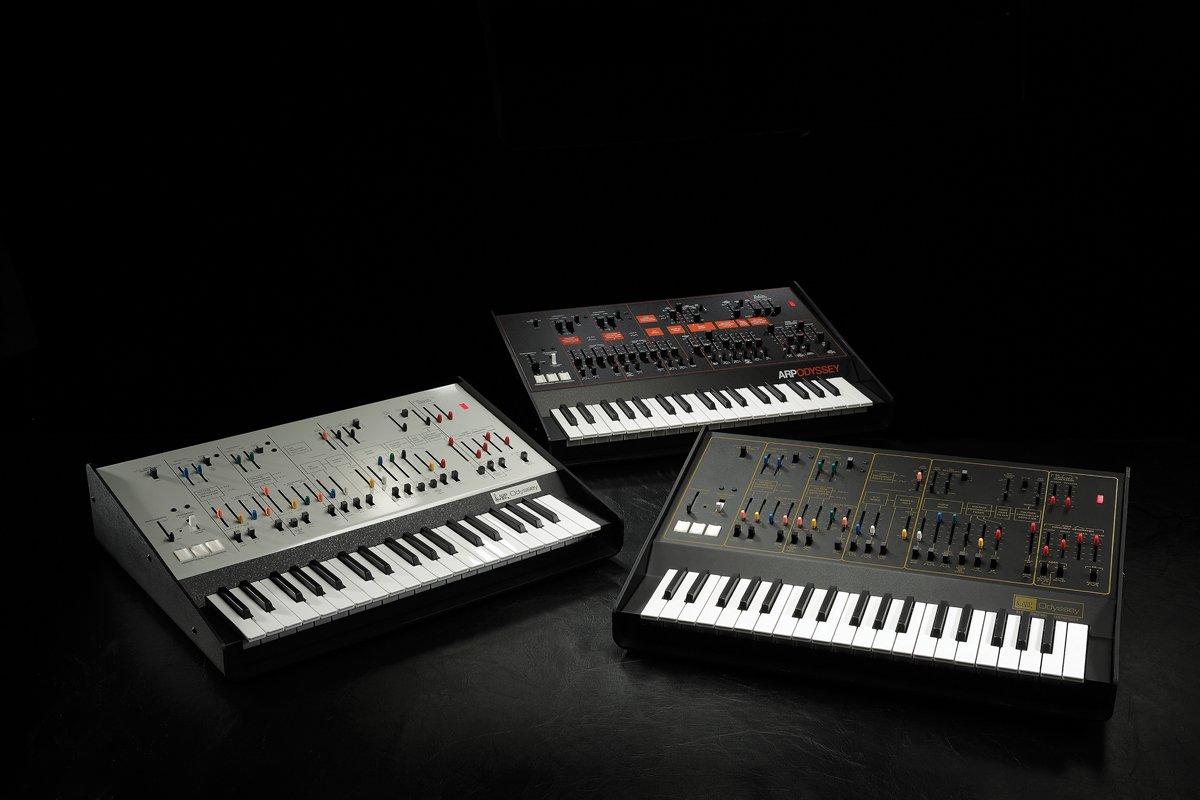
Like the Minimoog, the Odyssey has the dubious honour of being cloned by Behringer. Also like the Minimoog, the Odyssey also lives on in the form of an app, known as the ARP ODYSSEi. Always in competition with the Minimoog, the two icons look like they will continue to live on side by side.
